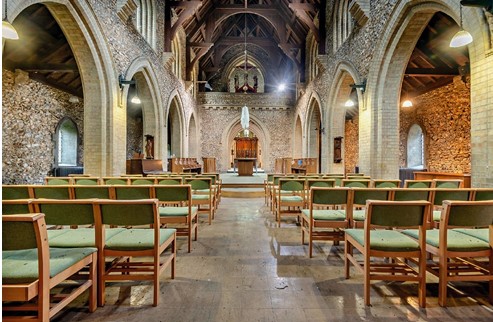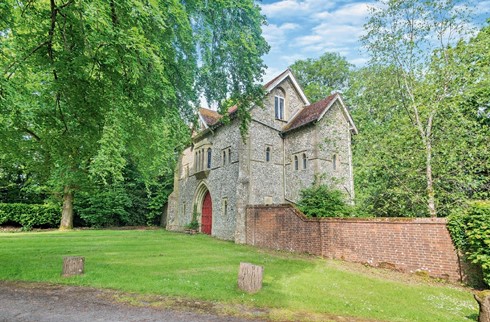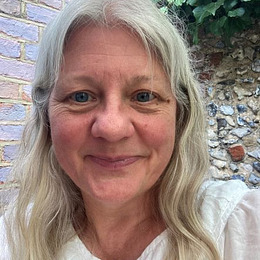
Alton Abbey – aerial shot. Photo: Carter Jonas.
Our Churches and Senior Conservation Adviser, Connor McNeill wrote in support of the listing of this unique set of buildings for a male Anglican religious community in Hampshire. Although many Anglican conventual buildings are included on the statutory list – often designed by highly significant and well-known architects – comparatively few were built for male communities. Alton Abbey not only housed a community of monks, but gave homes to destitute and retired men from the maritime world on the south coast. The Abbey represents one of the very few rural examples of a substantially intact Nineteenth and early Twentieth century purpose built monasteries in England – there are others in Wales – but this was purposefully built in a countryside setting which lends the buildings a romanticism and makes the most of the topography of the site. With the drastic decline and closure of many male Anglican religious communities Alton Abbey has an increased significance in communicating a fast-disappearing aspect of English religious life.

Alton Abbey church. Photo: Carter Jonas.
The church, gatehouse and chapel date from the Victorian Society’s area of interest. The abbey church and its monastic buildings evolved between the 1890s and the 1930s designed by two notable church architects, John Cyril Hawes and Sir Charles Nicholson. The Abbey church and other buildings are some of the few surviving English works by Hawes, who became best known for his Roman Catholic churches in Australia. The abbey church is built of flint dug up from the abbey’s own land and its design reflects that of Cistercian Gothic examples.
The Society thanks the Minister and Historic England for this listing at Grade II.

Alton Abbey exterior of church. Photo Carter Jonas.

Alton Abbey gatehouse. Photo: Carter Jonas.




